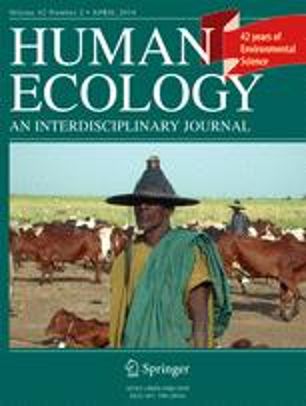| 来源类型 | Articles
|
| 规范类型 | 论文
|
| DOI | 10.1007/s10745-009-9241-6
|
| ISSN | 0300-7839
|
| Swidden Transformations and Rural Livelihoods in Southeast Asia |
| CIFOR$
|
| 发表日期 | 2009
|
| 出处 | Human Ecology 37(3): 323 - 346
|
| 出版年 | 2009
|
| 语种 | 英语
|
| 摘要 | This paper explores the major interactions between the transformation of swidden farming and the pursuit of rural livelihoods in the uplands of Southeast Asia. The
paper draws on selected literature, workshop reflections, and six case studies to describe the causal processes and livelihood consequences of swidden change. Householdlevel livelihood responses have included both the intensification
and dis-intensification of swidden land-use, the insertion of cash crops, the redeployment of household labour, and the taking on of broader (often non-rural)
livelihood aspirations and strategies. At the community level there have been emerging institutional arrangements for management of land and forests, and varying degrees of
participation in or resistance to government schemes and programs. Swidden change has led to the loss and also the reassertion, realignment, and redefinition of cultures and identities, with important implications for access to resources.
The impacts of these changes have been varied. Cash crops have often improved livelihoods but complete specialisation for the market increases vulnerability. Thus swidden can still provide an important safety net in the face of market fluctuations. Improved access to markets and social provision of education and health care have mostly improved the welfare of previously isolated groups. However, growing differences within and between communities in the course of swidden transformations can leave some groups marginalized and worse off. These processes of differentiation can be accentuated by heavy-handed state interventions based on swidden stereotypes. Nevertheless, communities have not passively accepted these pressures and have mobilized to protect their livelihood assets and strategies. Thus swidden farmers are not resisting appropriate and supportive forms of development. They are adopting new practices and engaging with markets, but in many situations swidden is still important to their livelihood strategies, providing resilience in the face of turbulent change. Active involvement of local people is essential in planning, implementing, monitoring and evaluating development and conservation programs in
swidden lands. Positive market incentives and supportive government policies are better than standardised, top-down directives. |
| 主题 | livelihoods
; agricultural development
; upland areas
; food security
; governance
|
| URL | https://www.cifor.org/library/2804/
|
| 来源智库 | Center for International Forestry Research (Indonesia)
|
| 引用统计 |
|
| 资源类型 | 智库出版物
|
| 条目标识符 | http://119.78.100.153/handle/2XGU8XDN/91389
|
推荐引用方式
GB/T 7714 |
CIFOR$. Swidden Transformations and Rural Livelihoods in Southeast Asia. 2009.
|
|
文件名:
|
03007839.jpg
|
|
格式:
|
JPEG
|

除非特别说明,本系统中所有内容都受版权保护,并保留所有权利。